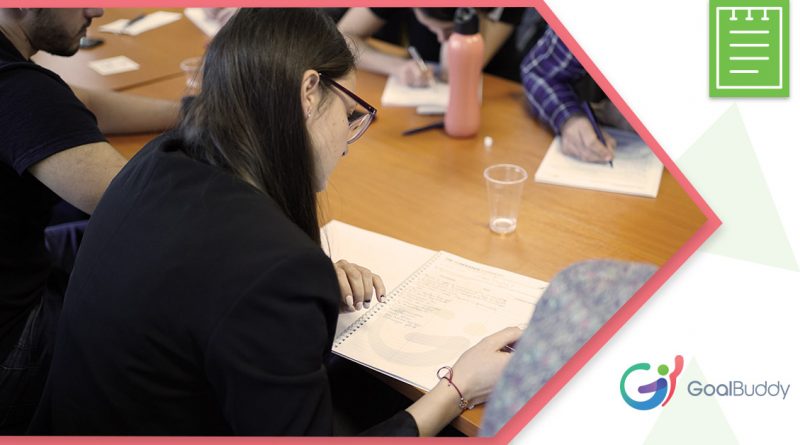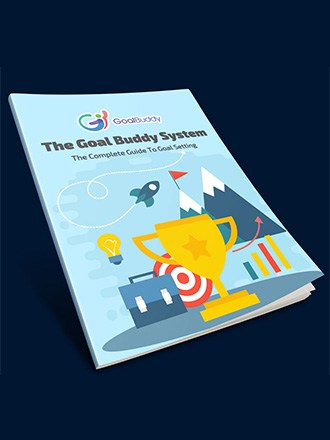Key №3: Action [excerpts from the book]
Today we continue with the series of the most important parts of our book “The 4 keys to achieving goals”. Here we will look at key №3 – action and the various strategies on how to turn our dreams into reality.
“Vision without execution is hallucination.”
That’s the quote that opens the chapter about action. It was Thomas Edison, the visionary and inventor who changed the world for better, who put in one sentence what happens when our intentions are not coupled with the corresponding efforts.
Unfortunately, we all know some people and their great ideas that never materialized. They have simply never made the very first step of actually doing something about it.
It’s not just about dreams
Dreams are something wonderful. When we have a clear vision we feel the peace of mind that we are in control. The motivational industry is mostly focused on the inspirational message which is a big boost to our desire to live to our fullest potential. However, this positive effect will be completely wasted if not followed by consistent and determined action.
The “GoalBuddy”
It’s no coincidence that action is one of the main factors. In our system, we not only emphasize the central role of getting our plans executed but how to do it in sync with our vision.
But this could become an insurmountable challenge if we are not very disciplined in our daily life. When we have no good idea about our destination we will inevitably end up being stressed, exhausted, and chronically short on time. And even worse – short on any success.
So, first, we make a mark of where we want to go (the vision, or key №2), then we start working in this direction (with 90-day goals, or key №3). We do that by making those small but regular steps (key №4). Of course, our Buddy (key №1) is right next to us all the way.
The vision as a starting point
The vision pushes us in the right direction. We may not take the shortest route or we can march straight forward but in any case, we most definitely need to know where we are going.
Of course, there is no way to know in advance how exactly things will unfold in any of the major aspects of our lives, such as health, finances, relationships, career, etc.
Plus, there are always many more paths that can take us all the way across the finish line. Choosing the best one is not done with detailed plans but simply by setting the first of several intermediate objectives.
And we achieve it with the help of what we call the 90-day action goal.
Key # 3
It is the strategy with which we can make gradual but steady progress.
What we need is to make our mind on the course of action and then commit to it.
Every three months we set a 90-day goal related to one of our visions (optimally 3 for the quarter). We are determined to work on them in the manner we decided and stick to it until the quarter is over.
These are the 3 main characteristics:
- It’s firmly tied to the vision by being a short-term objective aiming at a long-term one, aka the big dream.
- Working on it is by a series of acts that depend only on us.
- In the course of 3 months, we gain experience and learn so that we have a basis for how to proceed further.
Why 90 days?
After a while going here and there through a lot of trial and error, we finally realized that 90 days is the perfectly sized time-frame.
On the one hand, 90 days is short enough so that most people manage to stay on track with the help of what’s a reasonable amount of perseverance.
It’s a fundamental rule in our system – we don’t change anything before the end of the 90 days. Otherwise, we can’t get a realistic and meaningful assessment if our efforts would produce results.
On the other hand, it is a long enough period to gain experience and allow things to work out. As a result, we will know what to do differently in the next quarter.
Let’s go now in chronological order. It all starts with the very definition of an objective and this often is the very first time and place we could make a mistake.
Formulating can help us a great deal, or completely ruin our efforts
According to scientific research, almost 94% of people give up their New Year’s resolutions in the first couple of weeks. So, we ask. What if the biggest challenge is in the very first step, i.e. the definition of what we aim at.
The poorly worded objectives will set us for failure. Many people are easily tempted to employ the popular SMART[1] goals. We will try to demonstrate how this approach can misfire.
SMART goals, or why they are not so “smart” after all
By definition, they are specific, measurable, achievable, results-based, and time-bound. And that seems quite promising, but there are downsides which are not to be underestimated.
- Being “achievable” means they are short-term. As such they become limiting, even if the period is longer (as a New Year’s resolution). That’s why the “GoalBuddy” system has a vision (bold and inspiring dreams) and 90-day goals (short-term strategies).
- The “result-based” requirement completely undermines our chances of success! We end up surrendering control and thus becoming a hostage to the chosen strategy by paying attention exclusively on the result which might simply be beyond our reach.
You can’t control the result. You can only control your actions.
Here’s how to prepare for success:
How to define your 90-day goals
They are not self-centered, but must always get us closer to the bigger objective. In that, they become much more inspiring than any SMART goal.
There are two pre-conditions:
- They have to be focused on what we actually do. These actions should depend entirely on us.
- The desired end result should be an essential part but only to the extent that it indicates what we are striving for, without being a factor in measuring success.
An example of doing it right and doing it wrong
We put together in the book a number of examples that make it easier for the reader to outline the directions for different areas of life. Let’s look at such a thing as health:
- “I want to lose weight” – this is very general and cannot be measured. This can’t be an objective by any criteria.
- “I want to slim down with 5lbs” – it is a little bit better, but still too general, no time-frame or specific course of action.
- “I want to lose 5lbs in the next 3 months “- this is one of the most typical “SMART goals. You probably already see the problem – the result is not up to you. There is no way to know for sure if you can do it. The way the objective is worded doesn’t point to a specific strategy. It simply states the final outcome regardless of how realistic it might be.
And we can go on with many more examples like that. But instead, let’s look now at how to do it right:
“I will go to the gym 3 times a week for 90 days trying to get rid of something like 5lbs.”
Measurement and direction
For a 90-day goal, the measurement is done on the action. We look back to find out how much we’ve done against what we’ve planned to. In our case, if we have exercised 3 times a week.
We have succeeded if we have kept the promise to ourselves to act regardless of the desired result. The importance here is 2-fold:
First, there is enormous motivational energy to be released – if you fulfilled your commitment with perseverance, you have reached your goal!
Second, it allows you to objectively study the strategy and then to decide what and how to continue in the next 90 days. For example, if you’ve managed to shed off 5lbs, then it means you are on the right track. But if it were only 2lbs, you may have to change things, i.e. go the gym 5 instead of 3 times or to include a better diet and more rest in your strategy.
At the end of the quarter, we take the measure of our actions and not just the result.
The objective as an experiment
The shortest path is not always as obvious and we have to work with what we have at the moment. We make our minds based on our current understanding, experience, and resources.
So, we go on by trying a certain strategy for the quarter to see how it will perform for us.
We call such an objective a “90-day experiment goal.” It can be applied to almost anything – business, career, finance, personal life, etc. In the end, we see if it was effective. This can spare us a lot of trouble, namely, going after something that’s not truly ours.
Which comes first – confidence or action?
You are not an exception to feeling the need for more experience and confidence before you start anything. But the opposite is true as well.
The action could easily precede confidence and you just dive in headfirst. After the first step and with time a new perspective will emerge. You will feel a bit more reassured and therefore will be able to make an even bigger step forward. This type of self-boosting confidence has the action as its driving force.
In order to make a breakthrough and defeat the limiting beliefs one has to gain confidence. And there is only one way to do that – to start working. Every small step means lessons learned and courage gained.
Let’s get ready
It’s always an easier journey when you set yourself up in advance for success instead of failure.
You do focus on what you do, and let the outcome determine the direction of your efforts. So, you are fully in command of what you do and thus you create greater opportunity to register progress, gain confidence, and keep going on.
Action is everything
It’s really simple: (vision + 90-day goals + small steps) multiplied by Goal Buddy factor.
If you would agree to hear our advice on what to do, we’ll offer the following two:
- Get started;
- Don’t stop.
And we’ll end today’s article with a line from our book, a quote from Wayne Gretsky: “You miss 100% of the shots you don’t take.”
[1] SMART – Specific, Measurable, Achievable, Result-based, Time-bound.


